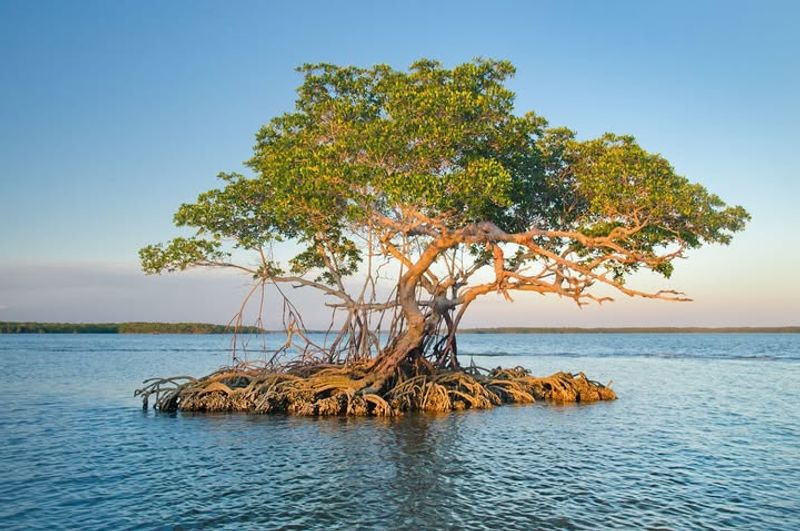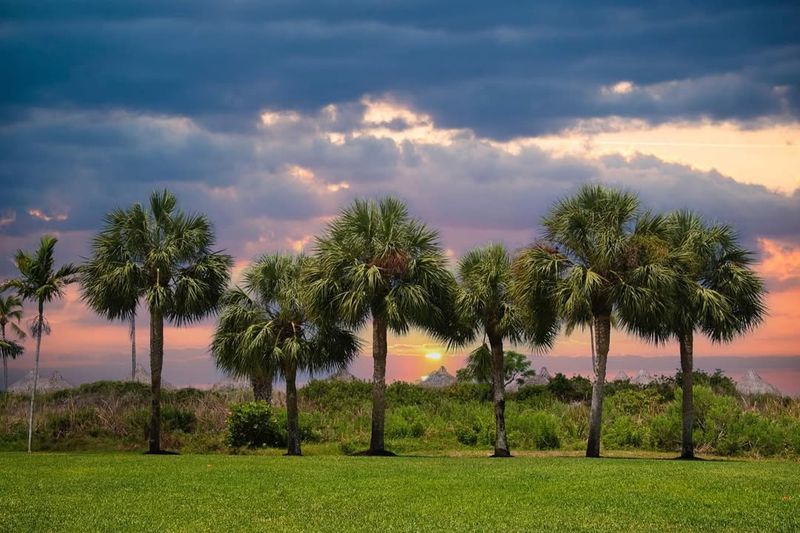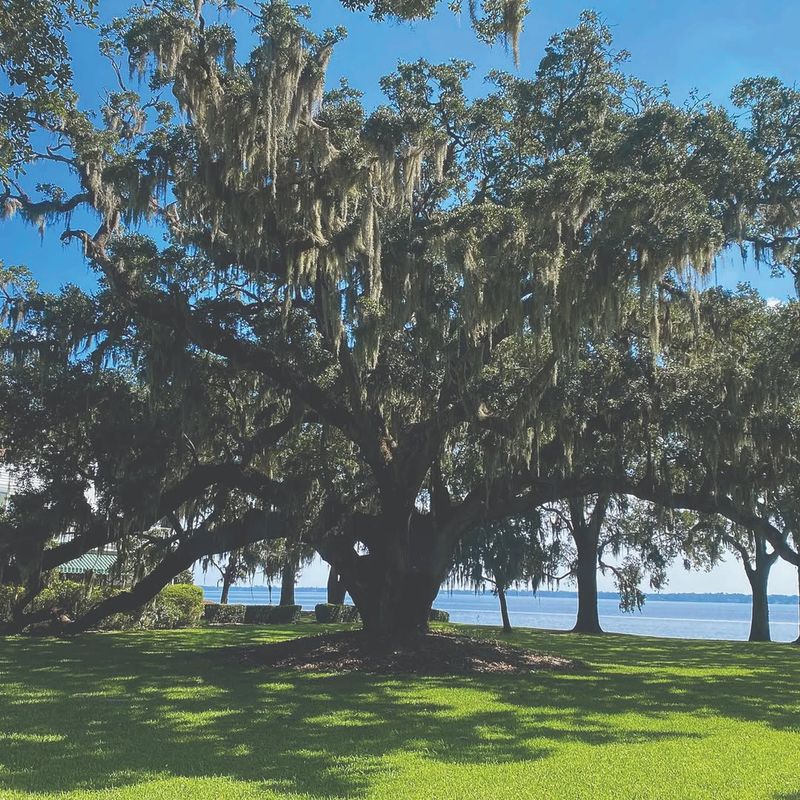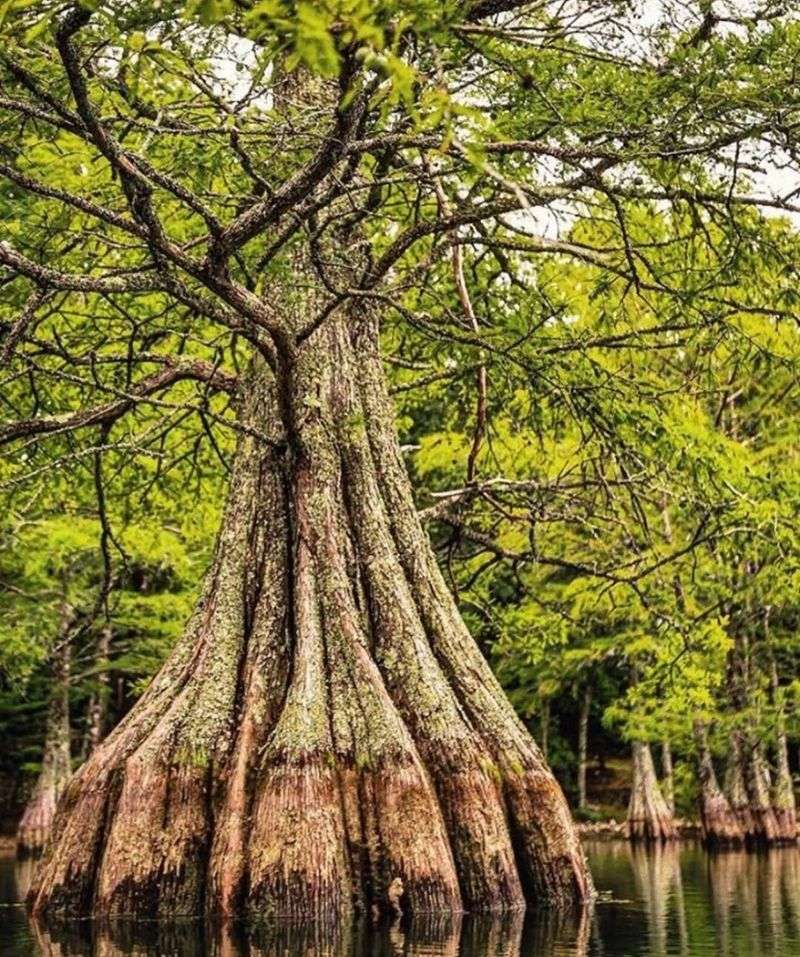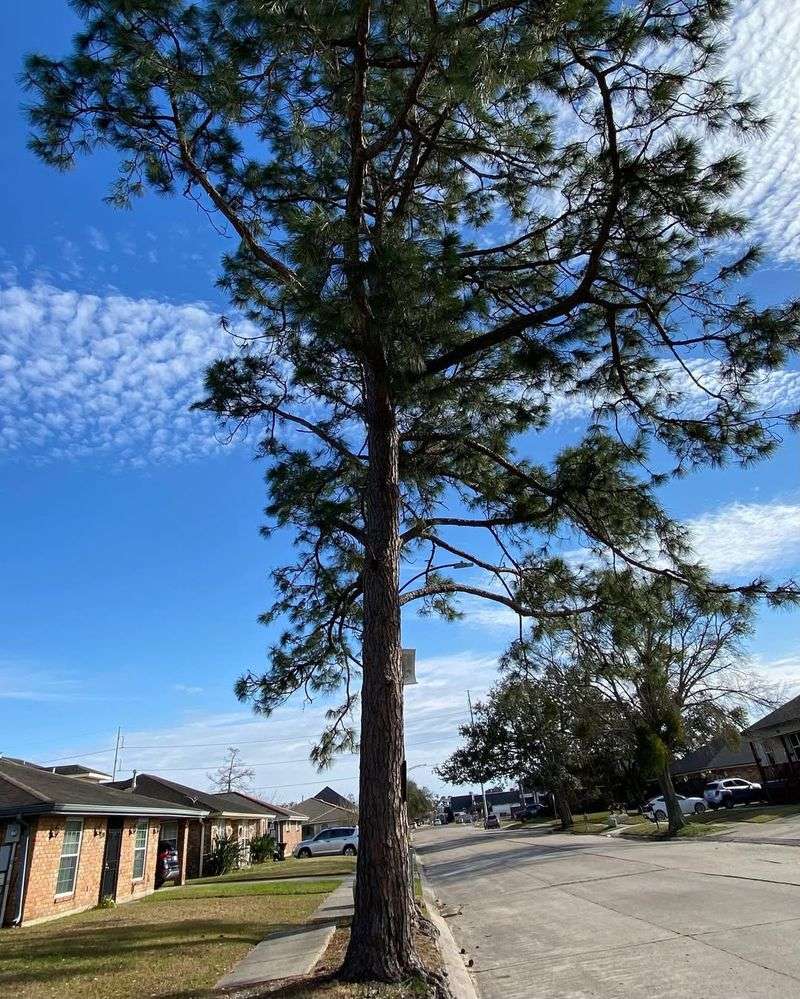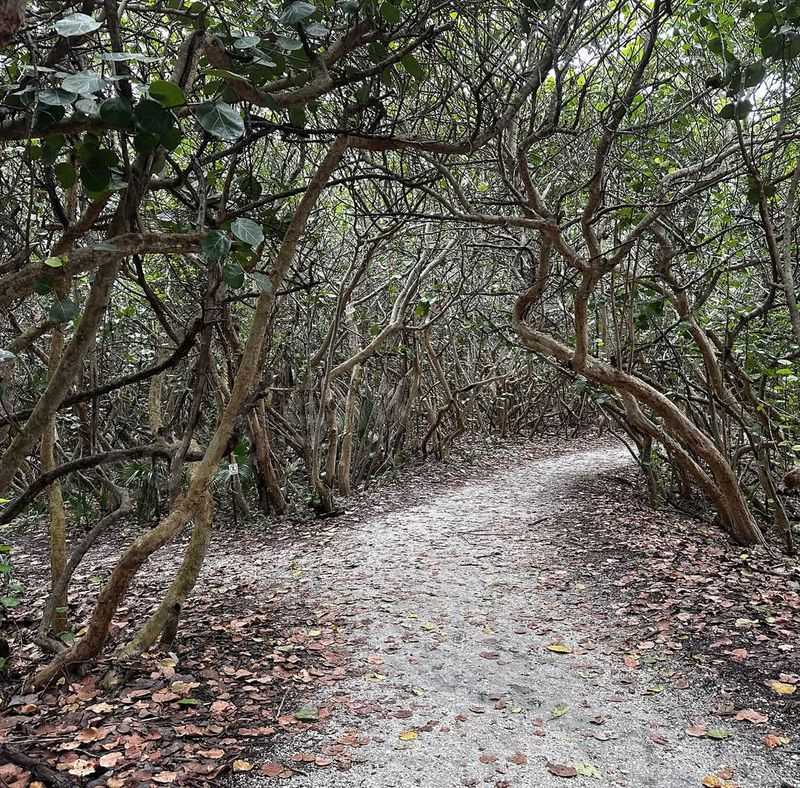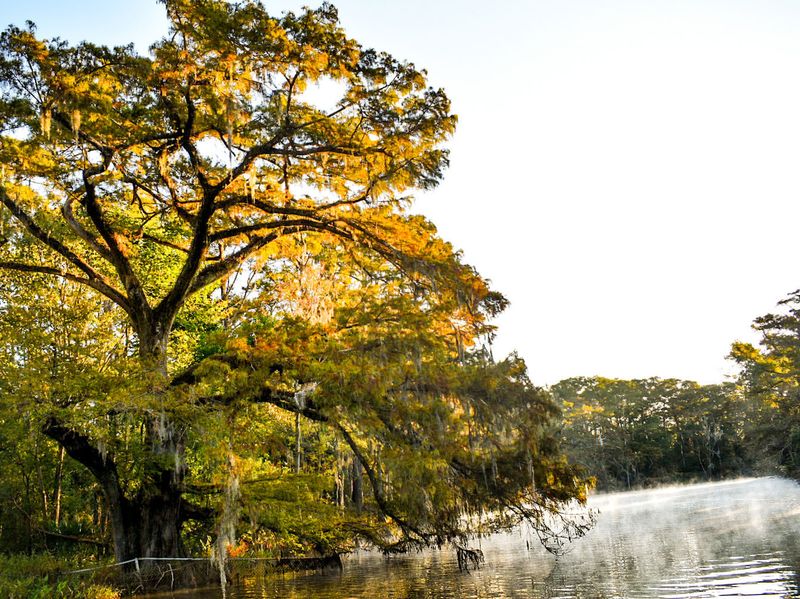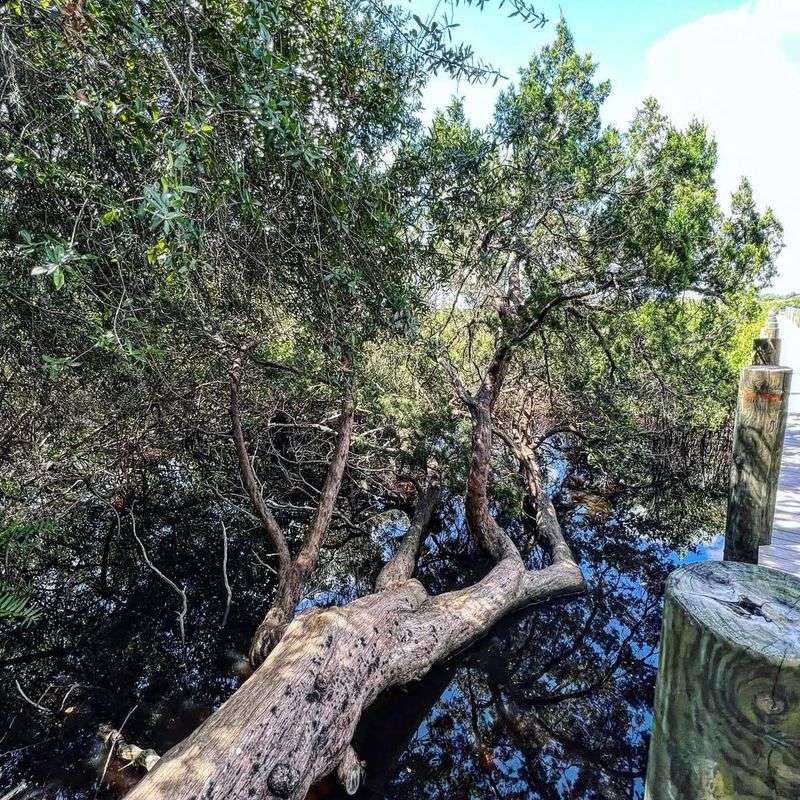Florida may be known for its sunshine and swaying palms, but not every tree in the state is fair game for cutting. Some carry serious protections, and taking one down without approval can land you in hot water fast.
These safeguarded trees play a big role in Florida’s landscape, and knowing which ones are off-limits can save you from hefty penalties and a world of trouble.
1. Mangrove Trees
Cutting down a mangrove without authorization can land you in serious legal hot water. Florida law protects these coastal guardians because they prevent erosion, filter pollutants, and provide nurseries for countless fish and marine creatures.
You’ll need special permits from both state and federal agencies before touching these trees. Fines can reach thousands of dollars per tree, plus you might face restoration costs.
Many waterfront property owners learn this lesson the hard way when they try improving their view.
2. Sabal Palm (Cabbage Palm)
As Florida’s official state tree, the Sabal palm enjoys special protection in many counties and municipalities. Local ordinances often require permits before removal, even on private property.
These palms can live over 100 years and provide important habitat for native wildlife. Removing one without permission might cost you hefty fines ranging from hundreds to thousands of dollars, depending on your location.
Always check with your local government before removing any cabbage palm from your yard.
3. Live Oak Trees
Grand live oaks are treasured throughout Florida, with many communities designating them as heritage or champion trees worthy of preservation. These majestic giants can live for centuries and define entire neighborhoods with their sprawling canopies.
Cutting one down illegally can result in fines exceeding ten thousand dollars in some jurisdictions. Many cities require certified arborist assessments before approving any removal permit.
The penalties increase dramatically if the tree holds special historical or environmental significance in your community.
4. Cypress Trees
Bald cypress trees thrive in Florida’s wetlands and enjoy protection under various environmental regulations. Since they typically grow in protected wetland areas, removing them often violates both tree protection ordinances and wetland preservation laws.
Double violations mean double penalties, sometimes reaching into tens of thousands of dollars. These trees play crucial roles in flood control and water filtration.
Before considering removal, you’ll need environmental impact studies and multiple agency approvals that can take months to secure.
5. Slash Pine
Native slash pines face protection in many Florida counties, particularly when they reach certain size thresholds or grow in environmentally sensitive areas. These fast-growing evergreens provide essential habitat for endangered species like red-cockaded woodpeckers.
Removing protected slash pines without proper authorization can trigger both state and federal penalties. Fines vary widely but often start at several hundred dollars per tree.
Some counties also require replacement plantings, adding significantly to your costs if you remove them illegally.
6. Gumbo Limbo
Known affectionately as the tourist tree because its peeling red bark resembles sunburned skin, the gumbo limbo enjoys protection in many South Florida communities. This native species tolerates salt spray and hurricanes better than most trees, making it environmentally valuable.
Local tree protection ordinances frequently list gumbo limbos as protected species requiring permits for removal. Violations can result in fines of several thousand dollars.
These trees also propagate easily, so replacement requirements might include planting multiple new specimens.
7. Mahogany Trees
West Indies mahogany trees are native to South Florida and face strict protection due to their ecological importance and historical over-harvesting. These hardwoods grow slowly and provide valuable habitat while enhancing property values.
Removing a mahogany without proper permits can trigger significant fines, sometimes exceeding five thousand dollars per tree. Federal regulations may also apply since these trees have faced commercial exploitation.
Many municipalities maintain registries of significant mahogany specimens with extra protections and even steeper penalties for unauthorized removal.
8. Sea Grape
Sea grapes stabilize beach dunes and provide crucial erosion control along Florida’s coastline. Their removal often violates coastal protection laws in addition to tree ordinances.
Because they grow in sensitive beach and dune ecosystems, penalties for unauthorized removal can be particularly severe. You might face fines from multiple agencies, including environmental and coastal management departments.
Restoration requirements could force you to replant native vegetation at considerable expense, making illegal removal a costly mistake for beachfront property owners.
9. Pond Cypress
Similar to bald cypress but with a more slender profile, pond cypress trees grow in wetland areas throughout Florida and carry similar legal protections. Wetland regulations make removing these trees particularly complicated and expensive.
You’ll typically need permits from water management districts, environmental agencies, and local governments before touching them. Unauthorized removal can trigger fines ranging from thousands to tens of thousands of dollars.
Restoration costs often dwarf the initial fines, making compliance far cheaper than breaking the law.
10. Southern Red Cedar
Southern red cedars provide year-round shelter for birds and wildlife, earning protection status in numerous Florida counties. These aromatic evergreens grow relatively slowly, making mature specimens particularly valuable to local ecosystems.
County tree protection ordinances often include size thresholds that trigger permit requirements for cedars above certain diameters. Fines for unpermitted removal typically start around one thousand dollars but can climb much higher.
Repeat offenders face escalating penalties, and some jurisdictions pursue criminal charges for flagrant violations involving multiple protected trees.
11. Strangler Fig
Despite their aggressive growth habit, strangler figs are native to Florida and protected in many jurisdictions. These remarkable trees begin life as epiphytes and eventually develop massive root systems that support enormous canopies.
Their ecological value as food sources for wildlife makes them worthy of protection under local tree ordinances. Removing a mature strangler fig without authorization can result in substantial fines, often several thousand dollars.
The unique growth patterns of these trees also make replacement plantings challenging and expensive for violators.


